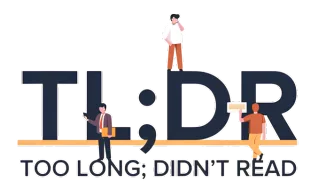You know Fiserv, right? The company that quietly handles money for thousands of banks and millions of shops. They are a giant in the payments world, often working behind the scenes. Well, they are making a move. A big one, into the digital asset space.
- Fiserv is launching FIUSD, a digital dollar pegged to the U.S. dollar, on the Solana network. This move signifies their entry into the digital asset space.
- The project leverages partnerships with established players like Paxos and Circle for core infrastructure, ensuring a solid foundation for the stablecoin.
- FIUSD aims to provide faster and more efficient transactions for Fiserv’s extensive client base of financial institutions and merchants.
By the end of the year, Fiserv plans to launch something called FIUSD. Think of it as a digital dollar, pegged one-to-one with the US dollar. This new stablecoin will live on the Solana network, a blockchain known for its speed.
They aren’t building this from scratch, which is a smart play. Fiserv is leaning on established players for the core infrastructure: Paxos and Circle. These are names you hear when serious money meets digital assets, giving FIUSD a solid foundation.
Fiserv calls FIUSD “programmable money.” It sounds like something from a sci-fi film, doesn’t it? But it simply means money that can move around the clock, without the usual banking hours or weekend delays. It aims to cut through the old ways of doing things, making transactions smoother and faster.
Who gets to use this new digital dollar? Fiserv’s existing client base. We’re talking nearly 10,000 financial institutions and six million merchants worldwide. That’s a lot of potential users, and it shows how mainstream financial firms are starting to look at digital assets.
Takis Georgakopoulos, Fiserv’s CEO, put it plainly in a statement. He said FIUSD will give clients “the efficiency and optionality they need to thrive in the evolving banking and payments ecosystem.” It’s about giving their clients more tools to work with.
A New Digital Dollar Takes Shape
This move by Fiserv isn’t happening in a vacuum. Washington is finally getting its act together on stablecoin laws. The U.S. Senate just passed the bipartisan GENIUS Act last week. It’s now headed to the House for a final vote.
This bill requires stablecoins to be backed 1-for-1 by cash or Treasury bills. It also demands regular audits and strong anti-money laundering checks. It’s all about making sure these digital dollars are safe and transparent.
President Donald Trump has urged the House to pass this bill quickly. His support shows how much political momentum stablecoin regulation has gained. It seems everyone wants a clear set of rules for these digital assets.
Fiserv isn’t alone in seeing the writing on the wall. Companies like Amazon and Walmart have also looked into launching their own US dollar-backed stablecoins. It seems regulatory clarity, even if slow, encourages big players to step in.
And it’s not just the US. Europe already has its own stablecoin rules under the MiCA framework. While MiCA has some limits on non-euro stablecoins, Fiserv’s choice to partner with regulated issuers like Circle could help them play by the rules in both places.
The idea of “deposit tokens” is also on Fiserv’s radar. These are tokenized products that could help lenders cut capital charges. Imagine a bank holding digital assets that are more efficient for their balance sheet. That’s the kind of innovation they are studying.
What does this all mean for the average person, or even for the financial institutions Fiserv serves? It means money could move with less friction. It means transactions might happen faster, at any time of day or night. The old rails of finance, built for a different era, are getting a digital upgrade.
This isn’t about replacing traditional banking overnight. It’s about adding new layers of efficiency. It’s about giving financial institutions and merchants more options. Think of it as adding a high-speed lane to an already busy highway.
The choice of Solana for FIUSD’s debut is also interesting. Solana has faced its share of technical bumps, but it offers high transaction speeds and low costs. For a company like Fiserv, handling millions of transactions, these factors are important.
This move by Fiserv is a quiet signal. It tells us that digital assets, particularly stablecoins, are no longer just for the crypto crowd. They are becoming a serious tool for established finance. It’s a gradual shift, but a significant one.
So, next time you swipe your card or make a payment, consider the digital currents flowing beneath the surface. Companies like Fiserv are working to make those currents faster and more efficient, one stablecoin at a time.

















